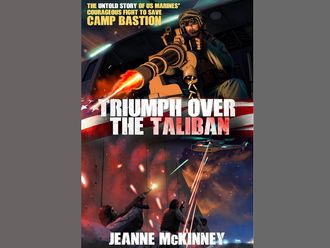
The Indian tectonic plate, moving northwards into Central Asia by around 5cm a year, triggered the massive earthquake that scientists had for years predicted would hit the Himalayan country,” said the Asian Age in an editorial. “The effect on a vulnerable poverty-riddled region, which has extremely lax building construction standards, has been devastating. The search for survivors is top priority ... A lot more must be done in extending emergency help, including in the avalanche-hit Everest region. While parts of north India were also hit in Saturday’s tragedy, the top priority must be to give Nepal all possible medical and technical help, besides financial assistance.”
According to the newspaper, while geologists have noted a gap of about 80 years between cataclysmic events in eastern Nepal, such as the years between the 8.1 quake in 1934 and last week’s temblor, “disaster preparedness must be set in motion very soon for all Saarc [South Asian Association for Regional Cooperation] countries to be able to handle such events.” It also blamed general poverty and below-par building standards in seismic zones of Nepal for exacerbating the tragedy.
Exploring a different viewpoint, the Nepali Times highlighted the looming dangers on the world’s highest mountain. “The over-commercialisation of the Everest industry, a free-for-all caused by regulatory failure and bungling in Kathmandu, and the race to the top of the Third Pole has led to dangerous overcrowding on the mountains,” the newspaper commented in an editorial. The newspaper also highlighted what it called the “free-market laws of supply and demand” that it claimed now make the rules on the mountain, and warned: “No one wants to stop the Everest expedition industry since it is a source of livelihood for so many, but we should question the disproportionate danger that the porters and guides are forced to put themselves through while being paid the least and getting meagre insurance compensation if they are killed or wounded.”
The other major issue last week was the admission by the Obama administration on the accidental deaths of two hostages in a drone strike against Al Qaida in Pakistan, which reignited the debate on the controversial policy pursued by the US president. “The revelation that two Western hostages died in a US counter-terrorism operation in Pakistan early this year is shocking,” said the Los Angeles Times in an editorial. “It will, and should, revive the largely dormant debate about the drone attacks on Al Qaida figures and other militants. In the meantime, President Obama needs to be forthcoming ... about the justification for the attack on a suspected Al Qaida compound in January that killed Warren Weinstein, an American, and Giovanni Lo Porto, an Italian.”
The New York Times, on the other hand, welcomed the frankness from Obama in owning up to the drone deaths. “For years, the Obama administration has kept its drone strikes shrouded in great secrecy, knowing that what have been described as precision attacks on terrorist targets have also killed innocent civilians,” the newspaper observed in an editorial. “So it was important to see candour and remorse from President Obama in his apology for the killing of two hostages held by Al Qaida.”





_resources1_16a31069e4e_small.jpg)





